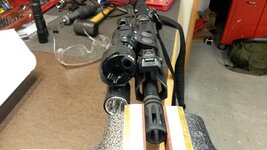- Messages
- 1,660
- Reactions
- 1,977
For those that are into it how soon did you get into NV after getting into firearms? What did you start with I'll start, I had roughly 10 firearms (it had been roughly 4 years) then got into the NVG game. Still running a Gen 3 PVS14 and Perst 3. I do not find myself behind the curve of those with better gear but I find myself wanting to sell off a few firearms and put that into another IR laser or a pair of duel tubes (definitely need a dot on my pistol).
Curious other peoples thoughts or bits of gear that are worth it to enhance running around in the dark.
Curious other peoples thoughts or bits of gear that are worth it to enhance running around in the dark.












